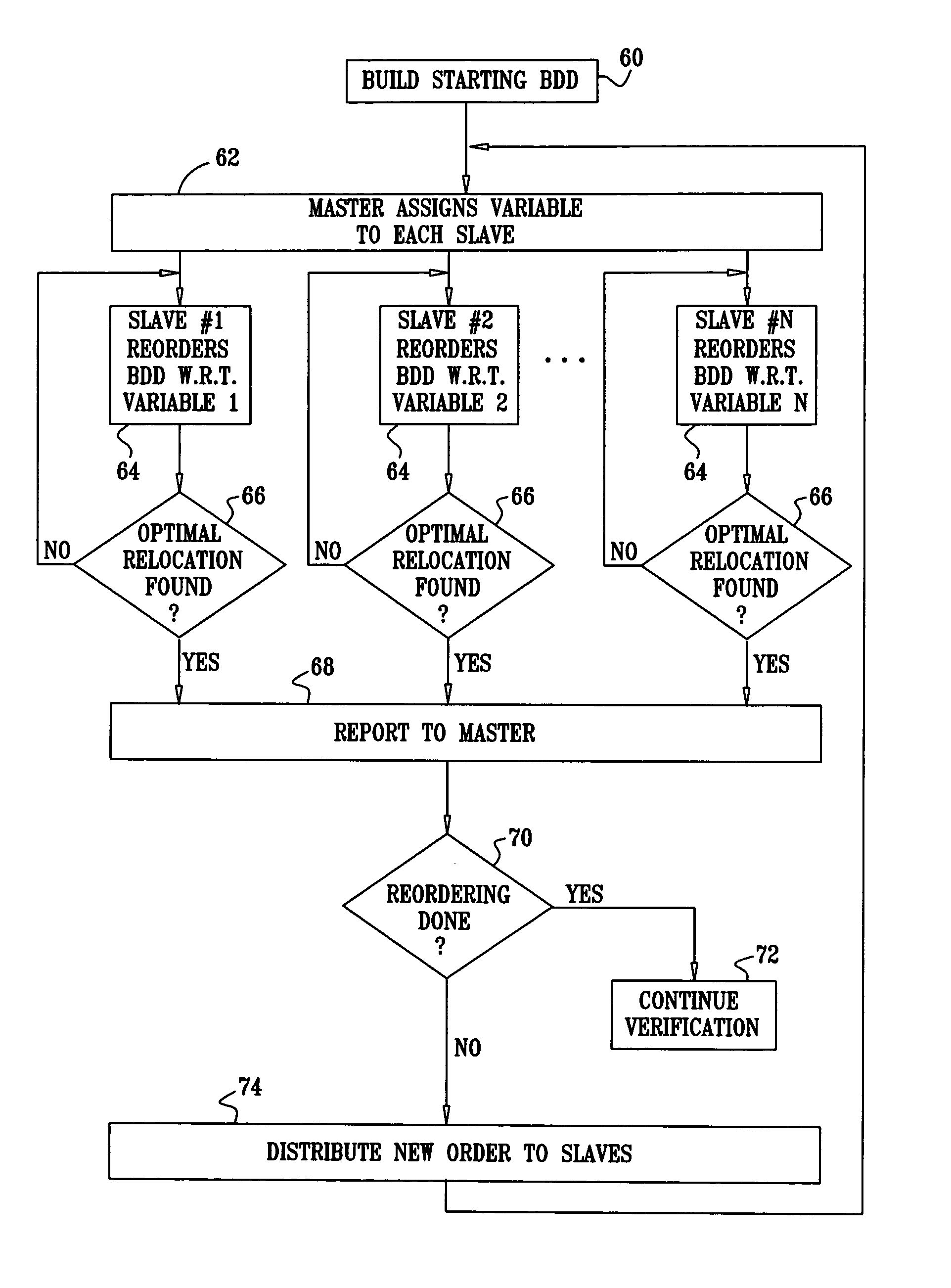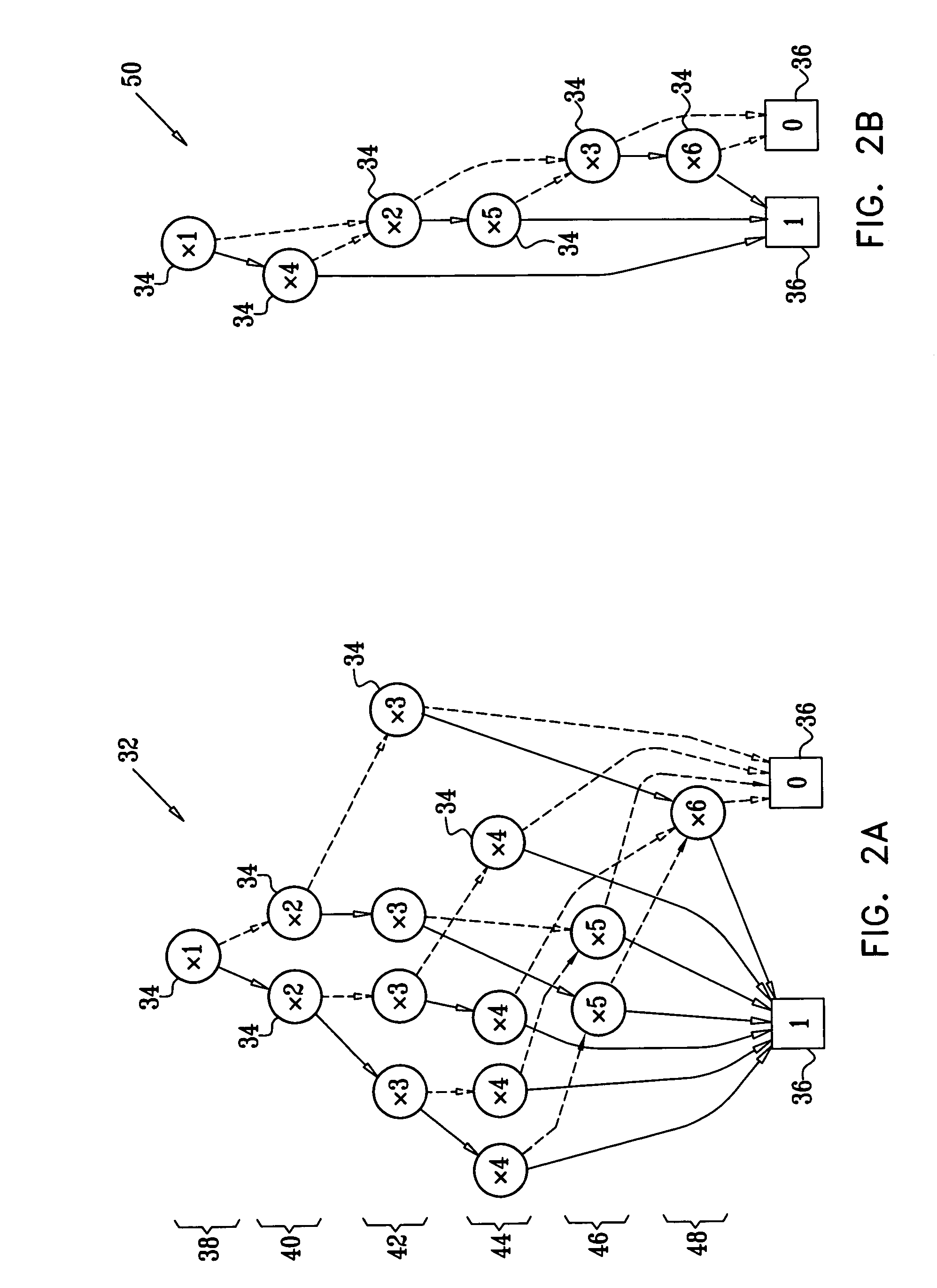Distributed BDD reordering
a reordering and distribution technology, applied in the field of design automation and verification, can solve the problems of increasing the size of the obdd, increasing and increasing the computational burden of existing reordering algorithms, such as those described above, so as to achieve the effect of reducing the number of nodes in the obdd
- Summary
- Abstract
- Description
- Claims
- Application Information
AI Technical Summary
Benefits of technology
Problems solved by technology
Method used
Image
Examples
Embodiment Construction
[0050]FIG. 1 is a block diagram that schematically illustrates a computer system 20 for formal verification, in accordance with an embodiment of the present invention. System 20 comprises a master processor 22 and one or more slave processors 24, referred to hereinbelow as master 22 and slaves 24. Each of master 22 and slaves 24 comprises a central processing unit (CPU) and memory (not shown), along with suitable communication interfaces, as are known in the art. Master 22 may also serve as one of the slaves for purposes of OBDD reordering. System 20 may comprise a multi-processor computer, containing the master and slave processors, each with its own memory resources or memory partition. Alternatively, system 20 may comprise a cluster of separate computers, which serve as the master and slaves. Other multi-processor system configurations will be apparent to those skilled in the art, and are considered to be within the scope of the present invention.
[0051]System 20 typically carries...
PUM
 Login to View More
Login to View More Abstract
Description
Claims
Application Information
 Login to View More
Login to View More - R&D
- Intellectual Property
- Life Sciences
- Materials
- Tech Scout
- Unparalleled Data Quality
- Higher Quality Content
- 60% Fewer Hallucinations
Browse by: Latest US Patents, China's latest patents, Technical Efficacy Thesaurus, Application Domain, Technology Topic, Popular Technical Reports.
© 2025 PatSnap. All rights reserved.Legal|Privacy policy|Modern Slavery Act Transparency Statement|Sitemap|About US| Contact US: help@patsnap.com



